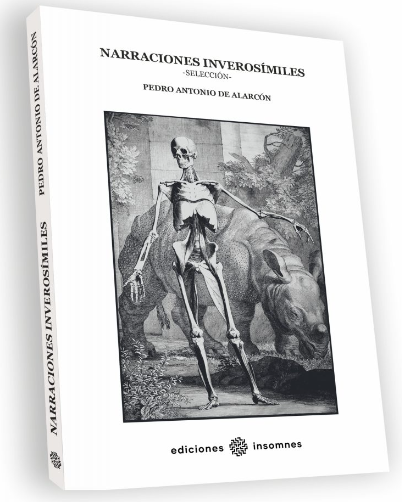
Original language: Español
Year of publication: 1882
Valuation: Curious
Pedro Antonio de Alarcón (1833-1891) founded and collaborated with various literary publications, fought a duel with a Venezuelan who ended up sparing his life, entered politics, was appointed academic and wrote both journalistic articles, stories and novels as well as diatribes against the Crown, the Monarchy and the Church.
“The Year in Spitzberg” presents us with a man who, after killing a love rival, is abandoned to his fate on an uninhabited and frozen island. The premise and development of this survival story are very linear, but I recommend reading it only for the beauty of its landscape descriptions and for the accurate psychological portrait it makes of a protagonist tormented by the fear of dying, loneliness, and tedium.
“The Friend of Death” narrates the delirious encounter of a shoemaker with the latter. Its length (which perhaps goes beyond that of a conventional story to delve into that of a short novel) hinders the pace of the whole a bit, since at times it seems that the central idea is stretched too far. Even so, it is a curious read that will delight lovers of fantasy literature of the time.
“The Black Eyes” combines tragic touches (adultery, revenge…) with adventures (duels, naval battles, shipwrecks…). Called “Scandinavian history imagined by an Andalusian” by Alarcón himself, it is frankly entertaining and satisfyingly intense.
“The Tall Woman” is a typically nineteenth-century “scary tale”, in which a horrendous old woman preludes the death of an engineer’s loved one. The grotesque imagery of the grotesque antagonist is very successful, as is the suspense and tension that a couple of scenes achieve.
As you see, the stories compiled in these Unbelievable stories. Selection They don’t have the most memorable characters or the most complex plots. To this we must add that his prose, although clearly correct, accuses some of the vices of nineteenth-century literature; namely, his slow and repetitive style. However, the anthology works and even constitutes a more fluid reading than one might imagine a priori.
Finally, I would like to praise the work of Insomnes. And the care and craftsmanship that the publisher has placed in Implausible narratives. Selection It’s amazing. To begin with, I would highlight the graphic section of the book; Above all, those black and white images accompany Alarcón’s stories. I also like the paratexts that complement the volume, an introduction and an appendix, as they adequately contextualize the work and the author without overwhelming the layman.
Source: https://unlibroaldia.blogspot.com/2024/11/pedro-antonio-de-alarcon-narraciones.html


